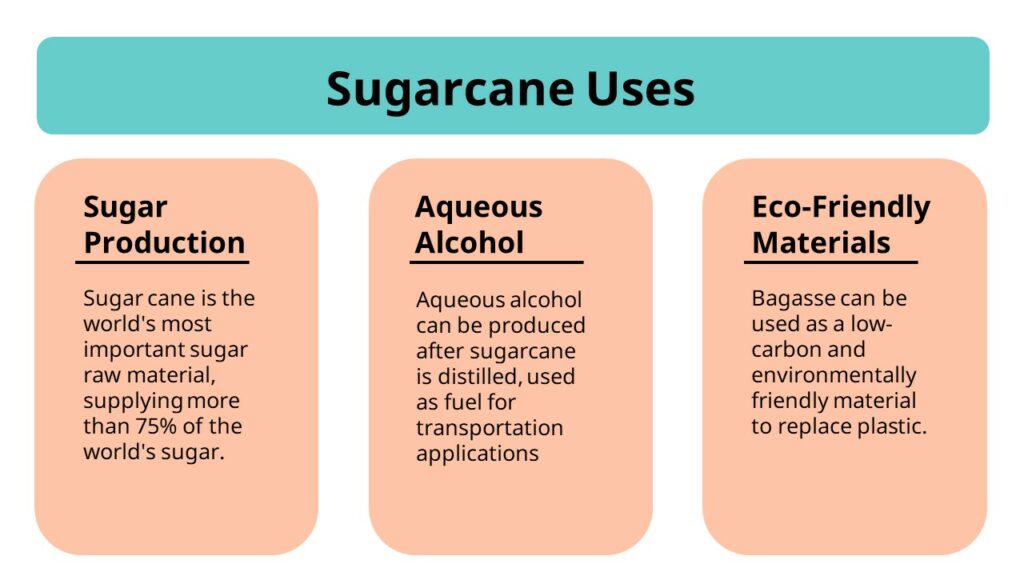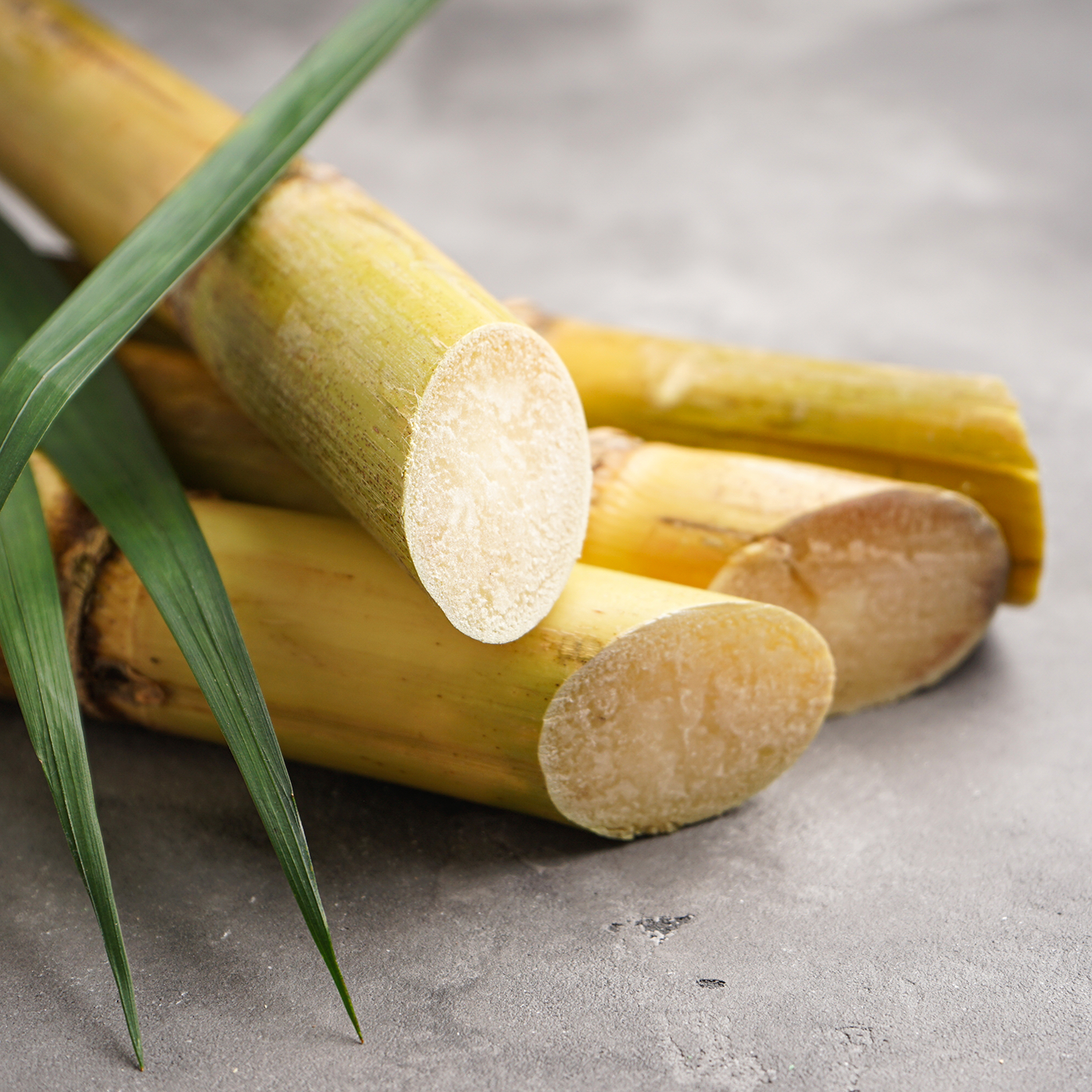What Are Sugar Canes Used For in Restaurants and Beverage Startups
Checking Out the Full Line of Process Chemicals: What Are Sugar Canes Made Use Of For in Manufacturing?
Sugar canes play a critical function in different making processes, working as a functional resources. Their high sucrose material makes them vital in the food sector, while technologies in biofuels and eco-friendly plastics highlight their potential beyond typical uses. Additionally, sugar cane extracts are acquiring acknowledgment in drugs and nutraceuticals for their wellness advantages. The complex applications of sugar walking canes raise interesting concerns about their future in industrial markets. What possibilities exist in advance?

The Journey of Sugar Cane: From Field to Manufacturing facility
As the sunlight increases over vast fields, the journey of sugar walking stick begins, marked by precise cultivation and harvesting procedures. Farmers choose ideal ranges, making certain durable growth in suitable environments. Routine irrigation and nutrient management are vital, promoting healthy and balanced stalks abundant in sucrose. When mature, the walking stick is gathered, often utilizing mechanical cutters that efficiently collect the stalks.Once accumulated, the sugar cane is moved to processing centers where it goes through washing and crushing to draw out juice. This juice is after that made clear, getting rid of pollutants through sedimentation and purification. The clear liquid is focused by dissipation, and ultimately crystallized to generate raw sugar.Throughout this journey, quality assurance is vital, guaranteeing that the end product satisfies industry criteria. The change of sugar walking cane into raw sugar illustrates an intricate interplay of farming and manufacturing, establishing the phase for its varied applications in various markets.
Biofuels: Harnessing Energy From Sugar Walking Cane
A significant part of the globe's biofuel production is acquired from sugar walking stick, which functions as a renewable resource source. This flexible crop is largely processed to draw out sucrose, which can be fermented to produce ethanol. Ethanol acquired from sugar walking stick is not only a clean-burning gas option yet also adds to minimizing greenhouse gas emissions contrasted to traditional fossil gas. In countries like Brazil, sugar walking cane biofuel has actually come to be a significant component of the energy matrix, powering lorries and decreasing reliance on imported oil. The cultivation of sugar walking cane for biofuels likewise sustains rural economies, supplying tasks in farming and handling. Additionally, the byproducts of sugar cane processing, such as bagasse, are used in energy generation, additional enhancing the sustainability of the manufacturing cycle. Generally, sugar cane biofuels represent an appealing avenue for achieving energy self-reliance while fostering ecological stewardship.
Eco-friendly Plastics: The Lasting Remedy
What if the solution to the international plastic dilemma depends on naturally degradable options? Naturally degradable plastics, derived from renewable sources such as sugar walking canes, provide an innovative approach to lowering plastic waste. Unlike traditional plastics, which can take centuries to decay, these eco-friendly materials break down normally, lessening ecological impact.The production of biodegradable plastics involves making use of sugars from sugar walking sticks to create polylactic acid (PLA) and various other biopolymers. These materials keep comparable performance to traditional plastics, making them suitable for numerous applications, including packaging, utensils, and farming films.As customers and sectors change towards sustainability, naturally degradable plastics use a compelling option. They not just minimize reliance on fossil gas but likewise support a round economic climate by returning to the earth without leaving hazardous deposits. The increasing need for such products signals a significant action toward resolving the my latest blog post pressing need for more lasting manufacturing services in the face of ecological challenges.
Sugar Walking Stick Removes in Nutraceuticals and pharmaceuticals

The Future of Sugar Walking Stick in Industrial Applications
As industries proceed to seek sustainable and renewable sources, sugar cane is positioned to play a pivotal role in various commercial applications beyond its standard use in sugar manufacturing. Its biomass supplies a sustainable resource for biofuels, minimizing reliance on nonrenewable fuel sources and adding to lower carbon exhausts. Additionally, sugar cane's byproducts, such as bagasse and molasses, are being checked out webpage for their possibility in bioplastics and eco-friendly materials, attending to the expanding demand for ecologically pleasant packaging solutions.Research is also underway to boost the performance of sugar cane derivatives in various fields, including fabrics, cosmetics, and building. By harnessing the unique homes of sugar cane, makers can create cutting-edge products that straighten with consumer preferences for sustainability. As modern technology advancements, the versatility of sugar walking stick will likely increase, solidifying its placement as a principal in the change toward a much more sustainable commercial landscape.

Frequently Asked Inquiries
What Is the Refine of Refining Sugar Walking Cane Into Sugar?
The procedure of refining sugar cane into sugar involves harvesting, squashing to remove juice, making clear the juice, evaporating water, crystallizing sugar, and finally drying and packaging the refined item for distribution and usage. (What Are Sugar Canes Used For)
How Does Sugar Walking Stick Effect Citizen Economies?
Sugar cane substantially influences local economic climates by producing work, enhancing agricultural production, and generating profits through exports. Its growing supports small farmers and neighborhood businesses, fostering community development and improving general economic security in sugar-producing regions.
Are There Any Type Of Environmental Interest In Sugar Walking Cane Farming?
Environmental worries connected with sugar walking stick farming consist of logging, soil destruction, water usage, and chemical overflow (What Are Sugar Canes Used For). These concerns impact regional ecosystems and add to environment change, motivating require more sustainable farming practices within the sector
What Are the Nutritional Perks of Sugar Cane?
The dietary benefits of sugar walking stick include its rich web content of anti-oxidants, vitamins, and minerals. It provides natural power, supports hydration, and may aid food digestion, adding positively to total health and wellness when eaten in moderation.
How Does Sugar Cane Contrast to Various Other Crops in Sustainability?
Sugar walking cane shows greater sustainability compared to lots of plants due to its effective usage of land and water sources, ability to produce biofuels, and capacity for carbon sequestration, contributing favorably to ecological health and farming methods. When fully grown, the walking stick is collected, usually making use of mechanical cutters that successfully collect the stalks.Once gathered, the sugar walking stick is transported to processing facilities where it undergoes cleaning and crushing to extract juice. Unlike traditional plastics, which can take centuries to disintegrate, these eco-friendly products break down naturally, decreasing environmental impact.The production of eco-friendly plastics involves utilizing sugars from sugar walking sticks to produce polylactic acid (PLA) and other biopolymers. Typically recognized for their role in sugar production, sugar walking cane browse around this site essences are increasingly finding applications in the pharmaceutical and nutraceutical markets. As sectors proceed to seek sustainable and sustainable sources, sugar walking cane is positioned to play an essential duty in various commercial applications beyond its conventional usage in sugar manufacturing. Additionally, sugar walking stick's by-products, such as bagasse and molasses, are being discovered for their potential in bioplastics and eco-friendly materials, addressing the expanding demand for eco pleasant packaging solutions.Research is also underway to enhance the effectiveness of sugar walking stick derivatives in different industries, consisting of textiles, cosmetics, and building and construction.